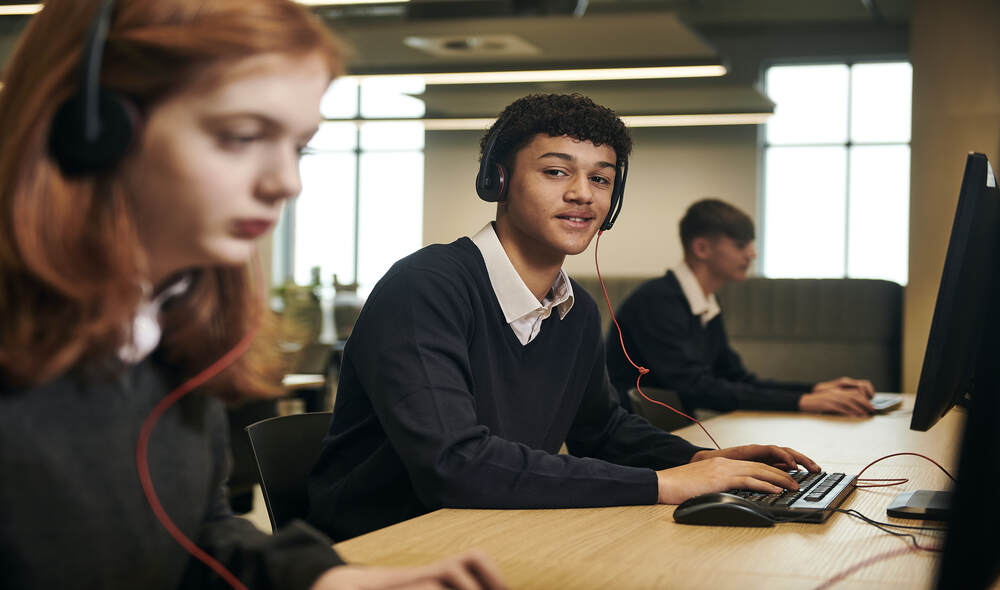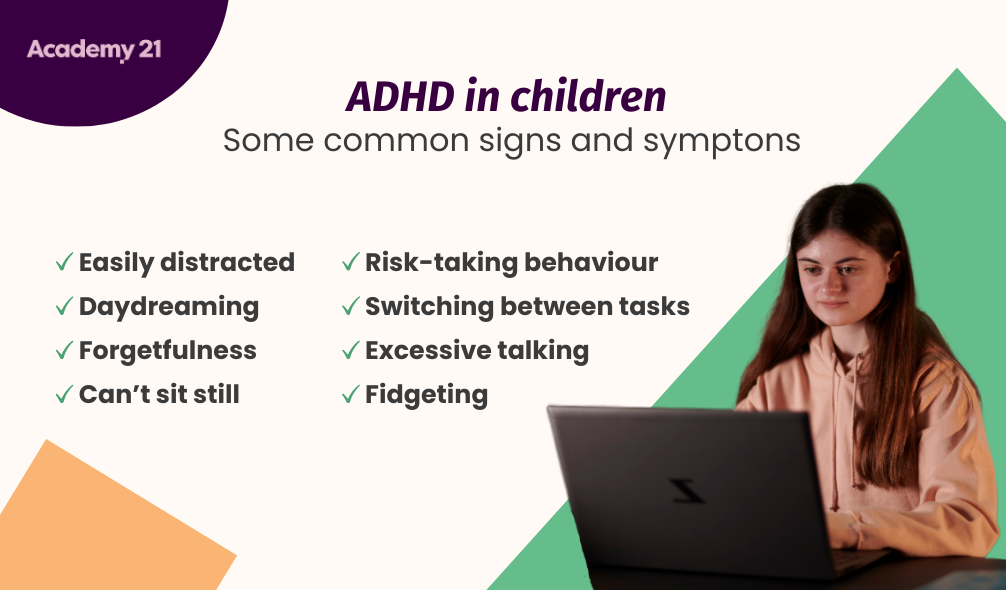How to support students with SEN
Over 80% of educators admit that it is ‘somewhat’ or ‘very’ challenging to provide adequate support for students with SEND – rising to 95% among SENCOs.

“Until we get equality in education, we won’t have an equal society,” said the American lawyer and jurist Sonia Sotomayor. While the concept of equality in education can take various shapes and forms, one step educational leaders can take in making learning as accessible as possible to all students is to understand what they need.
Over 80% of educators admit that it is ‘somewhat’ or ‘very’ challenging to provide adequate support for students with SEND – rising to 95% among SENCOs. No two students learn the same way, but it’s undisputable that students with SEN – also referred to as SEN students – face more barriers to education. This rings particularly true if their schools are not equipped with expert SEN staff and adaptive technology to help them overcome challenges.
What are Special Educational Needs (SEN)?
Special Educational Needs (SEN), also called Special Educational Needs and Disabilities (SEND), refer to a range of additional needs that make it more challenging for children and young people to learn. These children may require additional support to consume content and consolidate learning like pupils of the same age do.
Some students may have an official diagnosis or be in the process of getting one, but they don’t necessarily need a diagnosis to receive additional support. As educational leaders, we must understand the breadth of our students’ additional needs so we can provide appropriate support at the right time.
The growth in need
There are now over 100,000 more students with Special Educational Needs than there were in 2023 in England, bringing the current number of students with SEN to over 1.6 million. The Code of Practice (CoP) categorises SEND into 4 broad areas of need. ‘Communication and Interaction’ is the most commonly listed primary need across both Primary and Secondary schools. Within this, statistics show that a diagnosis of Autism Spectrum Condition (ASC) has the highest prevalence for students with an Education, Health and Care Plan (EHCP). Interestingly, for pupils without an EHCP but in receipt of SEN support at a school level, Speech, Language and Communication is listed as a primary need. This also sits within the ‘Communication and Interaction’ category according to the CoP.
Other learning barriers are now surging, too, while becoming more prevalent in our national understanding. One such learning challenge is ADHD or attention deficit hyperactivity disorder. Studies estimate that 5% of children across the globe have ADHD. According to the NHS, key symptoms include inattentiveness (difficulty concentrating), hyperactivity, and impulsiveness. And we are just scratching the surface.

The notion of a “typical” learner is increasingly being questioned, and for good reason. According to the UK Parliament, dyslexia is the most common learning challenge in the UK, affecting one in 10 children to some degree. This amounts to an estimated 1.2 million children across the UK and an average of two to three children in every classroom. These numbers suggest that what we often view as deviations from the norm may, in fact, be part of a much broader spectrum of learning diversity. Recent discussions among thought leaders, including in publications like TES, even question whether labels like “SEND” are becoming outdated when they encompass nearly 1.8 million young people in England alone.
This shift in thinking invites us to reimagine learning design itself. If we accept that the idea of “typicality” is largely redundant, it follows that our educational systems should be “inclusive by design.” Quality-first, inclusive teaching should be the baseline, not a special addition. By viewing education through this lens, we create environments that are adaptable to the unique strengths and needs of all learners.
The four areas of SEN needs
The SEND Code of Practice outlines the four areas of SEN needs below to guide student support. However, it’s worth noting that these categories are just one approach to understanding a diverse range of learning differences.
1. Communication and interaction
Children and young people with speech, language, and communication needs (SLCN) may experience difficulty in understanding language, expressing themselves, or interpreting social cues, which can affect their ability to communicate with others effectively. This group includes individuals on the Autism Spectrum, such as those with Autism or Asperger’s Syndrome.
2. Cognition and learning
Children and young people with cognition and learning difficulties require tailored support to learn effectively. Examples include dyslexia, which affects reading, writing, and spelling; dyscalculia, which impairs understanding of mathematical concepts; and dyspraxia, which impacts motor skills needed for handwriting and coordination. Others include ADHD, Auditory Processing Disorder (APD), and Nonverbal Learning Disorder (NLD).
3. Social, emotional, and mental health difficulties
This area includes children who may experience social withdrawal and isolation or exhibit challenging behaviours such as aggression, defiance, or disruptive outbursts. Such behaviours may stem from underlying mental health challenges like anxiety, depression, or trauma, which can significantly impact their emotional well-being and engagement in school.
4. Sensory and/or physical needs
This area encompasses children and young people with conditions that affect their ability to access educational resources fully. Examples include visual, hearing, multi-sensory, and physical challenges that may hinder mobility, balance, or physical participation in school activities.

Best tips for supporting students with SEN
1. Provide more flexibility
Flexibility is vital for many students with SEN, allowing them to learn in ways that cater to their unique needs. Academy21’s online alternative provision offers a hybrid learning model, enabling students to participate in lessons online and in their physical school. This approach accommodates a wide range of learning needs, making education accessible for all.
By challenging traditional assumptions about access, we enable more learners to find approaches that work for them.
Students have greater autonomy over their schedules, enabling them to control their pace and revisit lessons as necessary. Plus, we offer live and adaptive teaching, which boosts engagement and aids knowledge retention.
2. Incorporate multisensory learning approaches
Multisensory learning strategies engage multiple senses—sight, sound, touch, and movement—to help students with SEN absorb information more effectively. For instance, using music can stimulate imagination and enhance routines, while visual aids such as mind maps can significantly improve understanding and retention. Allowing students to select the features that best support their learning experience fosters confidence and a sense of empowerment.
3. Establish clear routines and predictability
Many students with SEN thrive on consistency, as predictability reduces anxiety and enhances focus. According to the Education Endowment Foundation, (re-)establishing clear routines is crucial for effective learning. Simple strategies, like greeting students at the door and defining entry activities, can help. Additionally, incorporating brief learning breaks for quick breathing or grounding activities allows students to reset and de-stress.
4. Use assistive technology thoughtfully
Assistive technology can be a game-changer for students with SEN when thoughtfully incorporated into their learning routine. If you are not in a position to invest in new technologies, online alternative provision specialists like Academy21 leverage a range of assistive tools that can support your students, from dyslexia-friendly fonts to closed captioning and modelling answers.
During their live, adaptive lessons, students can communicate with the teacher or their peers via private and public chat pods. They also have the option to not use their microphone, and instead communicate only via chat.
This flexibility means that students can choose how they engage depending on their comfort and needs on any given day. For instance, students who may feel hesitant to speak out loud can start by typing in the chat or observing others until they feel ready to share ideas verbally. Similarly, students experiencing sensory sensitivity or anxiety on certain days may benefit from private interactions with the teacher, without feeling pressured to engage with other peers.

5. Set realistic goals
Setting achievable expectations helps SEN students build confidence and resilience. By establishing smaller, step-by-step goals, students can enjoy frequent successes that boost motivation. Breaking tasks into manageable chunks and celebrating milestones empowers them to recognise their growth and fosters enthusiasm for learning.
To enhance this process, consider providing a model for goal setting, such as the EXACT model. This approach focuses on creating explicit goals that are concise—only a few words long. For instance, instead of setting a vague goal like “improve writing,” you might specify “write one paragraph.” By clearly defining goals in this way, students can better track their progress and achievements.
6. Offer constructive and timely feedback
Feedback for students with SEN should be immediate, constructive, and specific. Rather than generic praise, targeted feedback helps students understand what they did well and how to improve. For example, affirming desired learning behaviours—such as saying, “I like the way that you…”—reinforces positive actions and highlights behaviours for others to emulate.
When providing feedback, focus on specific learning goals and individual efforts. Instead of praising a completed task, highlight the strategies the student used: “Your attention to detail in solving this problem is excellent.” This approach helps students recognise the value of their efforts and encourages the application of effective strategies.
Using various feedback forms—such as verbal affirmations, written comments, or peer reviews—can enhance the learning experience. By inviting learners to build upon their peers’ contributions—offering examples or developing ideas—teachers can foster a collaborative classroom atmosphere. Adopting Rosenshine’s (2012) focus on successive relearning provides further opportunities for specific praise when used judiciously.
How Academy21 can help students with SEN
Providing students with SEN with the support they need extends beyond academic success; it is essential for their overall development, self-confidence, and long-term potential. As the leading online alternative provision specialist, Academy21 offers the high-quality education and tailored support your students need to achieve the best outcomes for them.
We offer a comprehensive curriculum for Key Stage 3 and 4 (and Key Stage 2 and 5 via our sister school, King’s InterHigh), dedicated SEN, academic and wellbeing support, and bespoke, flexible solutions that cater to every student’s needs. Whether your students have a cognitive learning barrier and need dedicated support with their students or are facing challenging circumstances and need to regain their motivation to learn, Academy21 can support them in reigniting their love for learning and reintegrating into mainstream school successfully.
Contact our friendly team below to learn more or refer a student.



